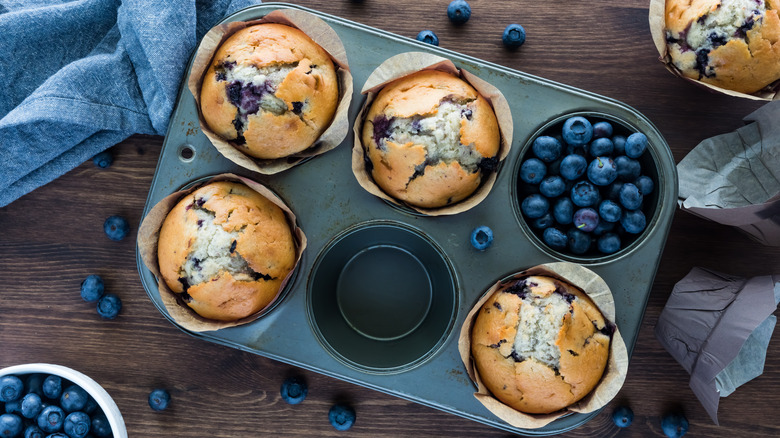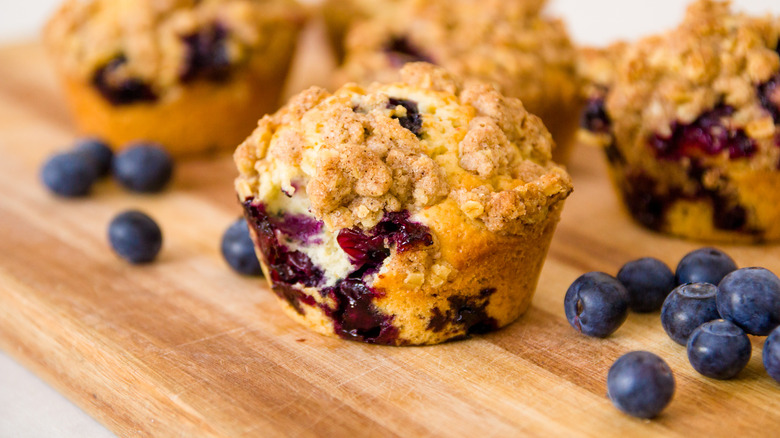The Batter Trick For Unbeatably Juicy Blueberry Muffins
No one wants to eat a bite of a blueberry muffin that doesn't have any blueberries in it — after all, isn't the sweet, juicy burst of fruity flavor kind of the point? So, to disperse berries evenly throughout the batter, many recipes will tell you to toss them in a tablespoon or two of flour before folding them in.
The idea here is that since blueberries are denser than the rest of the batter, they'll sink to the bottom if you simply stir them in your bowl as-is, resulting in muffins that rest on top of a layer of baked blueberries. Tossing them in flour, however, is supposed to absorb some of their liquid so they become lighter and stay in place.
The problem with this method? We don't actually want our blueberries' juices getting sucked into flour. When you bite into a muffin fresh out of the oven, you're going to get a dry berry — which again, kind of defeats the purpose.
So, to keep your berries plump and succulent, yet away from the bottom of the tin, try placing a little berry-free batter in each cup first. Then, fold your flourless blueberries into the bowl, and use the remaining batter to top off each cup. This base layer will prevent the fruits from accumulating at the bottom, so you won't be tempted to add in any extra flour.
Layer each muffin tin with a little plain batter first
Preparing your muffins this way keeps your blueberries nice and juicy once they come out of the oven — resulting in that sweet pop of flavor that we're going for. Their liquid may bleed out into the batter a little, so it's important to fold your berries in gently and stop mixing as soon as they're incorporated. You can also try rinsing and draining your blueberries ahead of time to remove any extra moisture, or tossing in rinsed frozen fruits (just make sure they don't have time to thaw first).
But even if you do get a little bleeding, it's still worth it to avoid the flour toss. To prevent dryness, you would need to retract the amount of flour you used for the blueberries from the total amount in the recipe, which can be tricky to navigate. And ultimately, it's just not worth it — more often than not, tossing blueberries in flour does nothing to prevent them from sinking to the bottom.
Of course, it also helps to have a thick batter. The fruits are the most likely to fall to the bottom if they're in a thinner liquid, and in general, a dense batter can produce more moist muffins. So if you're wrestling with heavy spoonfuls, you're probably doing something right — and as long as you layer plain batter in your cups, you'll end up with perfectly juicy muffins.

